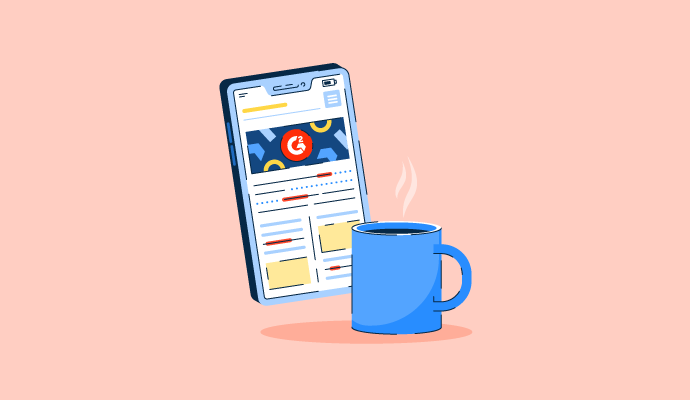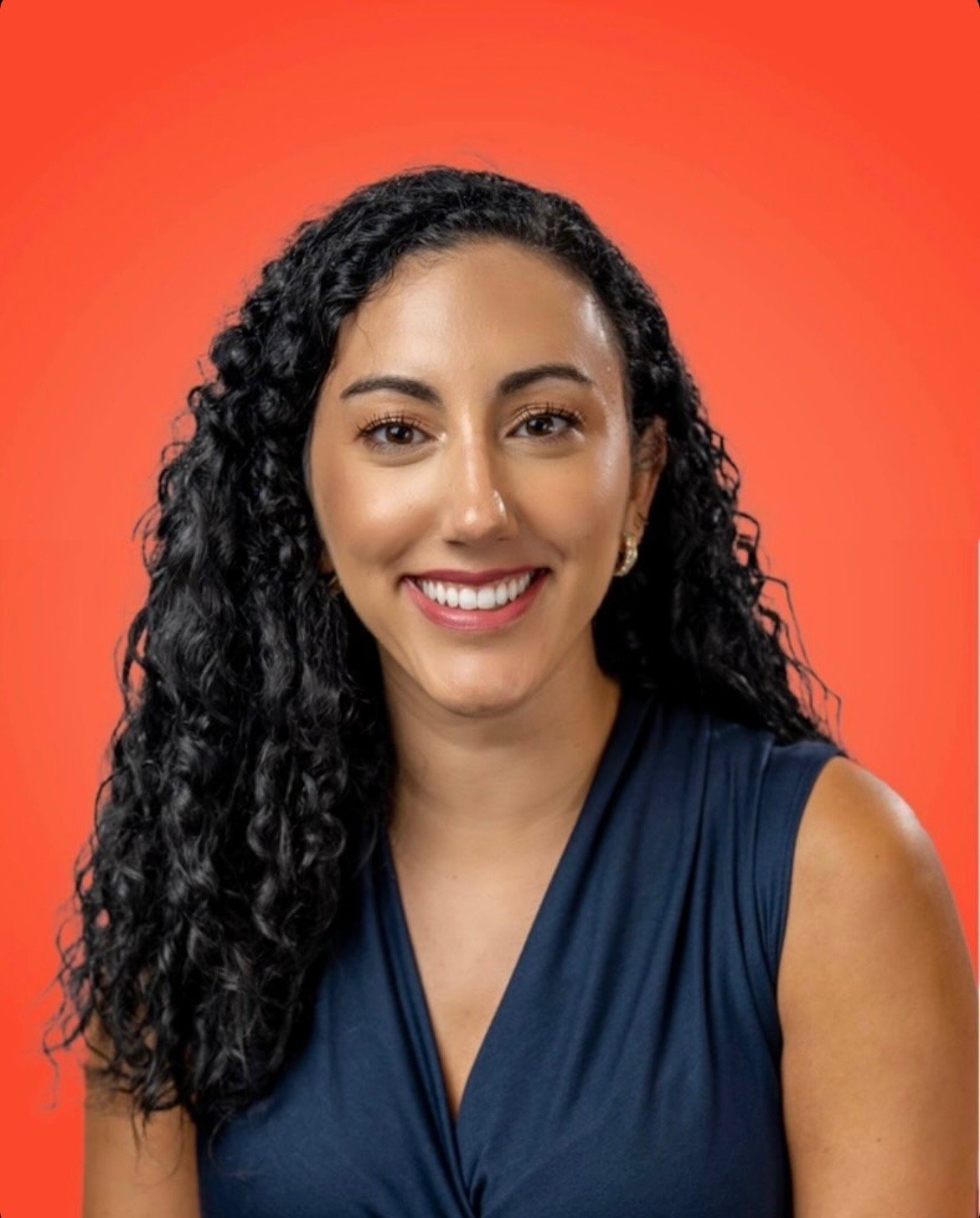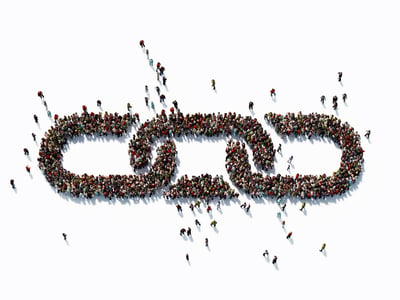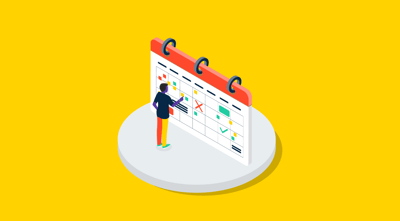February 5, 2025
 by Kamaljeet Kalsi / February 5, 2025
by Kamaljeet Kalsi / February 5, 2025

CFOs continue to raise eyebrows when CMOs assign budgets to influencer marketing. But why?
Marketing leaders have long struggled with defining the direct business value of influencer marketing, and most of this has its roots in the ROI measurement challenge.
And as they grapple with these concerns, it's essential to understand how influencer marketing can evolve to demonstrate clear value.
Over the years, this facet of marketing has undergone significant changes, adapting to new methods of demonstrating ROI through innovative strategies that emphasize creative genius, brand authenticity, and technological advancements.
To learn how these elements can transform influencer marketing into a measurable success, we interviewed Aneesh Lal, the Jerry Maguire of LinkedIn. Aneesh is the founder and mastermind behind The Wishly Group, a top LinkedIn influencer agency that has earned $1M in brand deals by transforming brand and creator relationships.
Dive in to explore his journey and insights on leveraging LinkedIn for influencer marketing success.
This is part of G2’s Industry Insights series. For more content like this, subscribe to G2 Tea, a newsletter with SaaS-y news and entertainment.
Kamaljeet Kalsi: Let’s start with an introduction. Can you tell us a little bit about yourself and your journey to founding the Wishly Group?
Aneesh Lal: Absolutely, happy to share! I'm the founder of the Wishly Group, a LinkedIn influencer agency dedicated to connecting creators across various domains, including sales, marketing, and revenue influencers.
We operate as the behind-the-scenes team, managing brand deals and aiding creators in growing and monetizing their personal brands. My background is rooted in media sales with prestigious companies like Coca-Cola and Pinterest. I’ve also handled major enterprise accounts such as Nike, Adidas, Cartier, Home Depot, and PetSmart.
I ventured out of the corporate world in June 2022 to launch my own business. I initially focused on fractional chief revenue office (CRO) work and supporting creators. My immersion into the influencer space began in collaboration with Kevin Dorsey (KD) on LinkedIn. This partnership sparked interest in the influencer community, particularly among sales influencers, who frequently inquired KD about his brand deals, leading them to me.
By January 2024, we started with a small group of 1 or 2 creators, and by December 2024, we expanded to 25 creators, experiencing significant growth.
Over the years, how have you seen brands’ perspectives of creators evolve? And what do you think makes LinkedIn a stand-out platform for deriving business value in this field?
I've observed some definite shifts in how brands perceive creators and LinkedIn's emerging influence.
B2C brands are still somewhat skeptical, but less so than before. B2B brands are the ones that have embraced influencer marketing more readily, especially those selling technology solutions. They see value in partnering with influencers specific to their industry, like sales or MarTech.
The social media landscape is changing — platforms like Instagram and TikTok are now saturated, struggling with bot issues, and facing challenges with brand safety. Users on these platforms also often don't have the same level of discretionary income.
LinkedIn, however, has transformed over the past few years. It was initially seen as a job-hunting and networking site. But it is now a platform where top performers, also typically the highest income holders, are now in discussion and asking “How do I get better at sales?”, " How do I build a new AI tool that I can use for my go-to-market(GTM) strategy?”, and more. I call them keeners. In fact, that's how I met you and different folks at G2.
Now is the right time for brands to venture into LinkedIn and engage with a very lucrative audience.
Which aspects of LinkedIn and its algorithm do you think make it a worthwhile investment for ad dollars?
Great question. When I worked with major brands like Cartier, Nintendo, and Adidas, I saw that they often faced challenges with innovation due to limited capacity. For them, the barriers related to time and focus are significant.
LinkedIn's most strategic move lately has been the introduction of a video feed, which you can find by updating your app and clicking 'video' on the bottom left. This shift is notable because it allows brands and creators who are already familiar with short-form content on platforms like Instagram, YouTube, and TikTok to repurpose their content for LinkedIn easily.
Previously, creating content for LinkedIn required a lot of planning and customization, which could deter brands from investing time and money. Now, brands can simply take their existing top-performing videos and bring them to LinkedIn, reducing the barrier to entry. This has resulted in increased engagement and unexpected opportunities. This ease of use is a huge advantage for LinkedIn.
Behind the scenes:
LinkedIn has made smart moves by hiring talent from other leading social media companies like Instagram and has learned a lot about optimizing algorithms. Hiring such experts has enabled LinkedIn to skip the learning curve and implement effective changes more efficiently.
“Pushing video content is just one part of LinkedIn's strategy to become a leading platform. Brands on LinkedIn are starting to publish more video content, and while the progress is gradual, it’s definitely picking up.”
Aneesh Lal
Founder, The Wishly Group
These technical advancements position LinkedIn as a top-tier option for advertisers moving forward.
What kind of content formats and strategies do you see succeed on LinkedIn?
The effectiveness of organic video or other ad types on LinkedIn really depends on the brand's goals. In my experience, with influencer campaigns, we focus on achieving awareness, consideration, and conversion. Using creators can be highly effective, as brands can boost these creator posts to extend reach. This approach is creative because it involves someone else endorsing the brand which helps reach different audiences and inspire trust more effectively than traditional advertising.
Co-authored content can be powerful for conversions.
Example:
When John Barrows collaborated with Otter on a meeting mastery guide, a simple call-to-action like "Comment 'meetings' for a copy" drove incredible engagement: around 1,500 comments and nearly 1,000 downloads. This success illustrates how brands can leverage LinkedIn's network effect effectively.
Three key formats are currently performing well on LinkedIn: short videos (under 60 seconds), carousel posts, and strategic images.
Videos are particularly effective if you capture attention within the first three seconds. Carousel posts and images with a strong hook, like illustrating concepts such as "remote work is here to stay," also engage well. The goal is to create content that stops the scroll, which can be achieved with compelling visuals and engaging storytelling.
Not all engagement is created equal. Can you share some insights on the engagement signals that matter the most and the ones that matter the least?
That's an excellent question, and engagement is often overlooked when comparing LinkedIn to other platforms. People sometimes focus on follower counts alone, but it's crucial to consider the audience's relevance. For instance, 100,000 followers who are sales leaders on LinkedIn are more valuable for a sales tech brand than 300,000 generic followers on Instagram.
The key is understanding the quality and focus of your audience. LinkedIn provides basic analytics, but we've developed a more sophisticated approach.
Using tools like Clay, we can "scrape" data on everyone who engages with our posts. This involves collecting publicly available information about those who like or comment on our content. We organize this data into a Clay table, gaining a detailed understanding of our audience's profiles. Specifically, we identify if these individuals align with our ideal customer profile (ICP). This insight helps us determine which posts effectively reach the right people.
“By focusing on audience specificity rather than just raw engagement numbers, we optimize our content strategies for maximum impact. This highlights why not all engagement is equal, and why quality interactions outshine mere quantity.”
Aneesh Lal
Founder, The Wishly Group
Harness the power of publicly available LinkedIn interactions to optimize your engagement strategies — all while staying compliant with GDPR, CCPA, and other data privacy norms.
Here’s how:
How do you tackle the challenges of attribution and ROI in influencer marketing, given the complex transition from MQLs to SQLs and the layered nature of acquisition processes?
This is indeed a challenging area, especially because CFOs need solid ROI evidence. Many marketers see influencer marketing as an upper-funnel strategy, but attributing its impact requires specific methods.
First, we set up a unique landing page for each creator collaboration. This page centralizes campaign activity across platforms — like newsletters and LinkedIn posts — allowing us to track its specific impact against the brand’s usual traffic benchmarks.
Next, we employ our Clay table method to analyze who engages with these posts. This data is then cross-referenced with the brand’s CRM over a look-back period, typically 30 days.
There’s also a couple of questions we consider:
These insights serve as vital signals indicating campaign influence. Although not all entries can be directly tied, seeing these companies in the CRM after a campaign suggests a significant impact.
“It's about connecting these signals and asking the right questions to showcase influence and conversion potential to financial stakeholders.”
Aneesh Lal
Founder, The Wishly Group
This structured approach allows us to bridge attribution gaps and clearly demonstrate the campaign's value. We combine traffic data with qualitative signals from audience engagement to build a comprehensive picture of success.
Any advice for SaaS brands on how to harness influencer marketing on LinkedIn?
When leveraging influencer marketing on LinkedIn, it's crucial to go beyond just posting content. While boosting posts to reach wide audiences is effective, we emphasize the importance of a multi-channel strategy.
Brands should consider creators who are active not only on LinkedIn but also on platforms like podcasts, newsletters, and webinars. Collaborating on co-authored ebooks, guides, and checklists can significantly enhance engagement.
These are strategic partnerships, which have shown a 90% renewal rate from pilot to long-term collaboration. This success stems from engaging deeply with a creator's entire audience beyond just LinkedIn. For a brand, this integrated approach means not settling for a couple of posts but fully engaging with the creator's audience across all channels.
Brands should also focus on continuing the conversation after the initial likes and impressions. Many overlook what happens post-engagement. It's essential to track and interact with leads generated and ensure that content strategy includes follow-up and further engagement.
This comprehensive approach helps turn interactions into sales, a key element we constantly educate brands about. Don't just stop at the post; explore every possible engagement avenue to deepen brand connections and drive results.
If you're unsure about LinkedIn influencer marketing, feel free to reach out to me.
When selling software, what are some good hooks that have usually worked?
When selling software, we find it more effective to focus on highlighting problems and blind spots rather than just promoting solutions and benefits.
For instance, instead of emphasizing the time-saving features of a productivity app, which most platforms claim, consider discussing the consequences of not saving time. Address issues like wasted resources and potential setbacks due to inefficiency. By using hooks that center around these problem-based narratives, you connect emotionally with your audience, especially those unfamiliar with your product.

Every Thursday, we spill hot takes, insider knowledge, and news recaps straight to your inbox. Subscribe here
This approach resonates more deeply, as it highlights urgent issues that your software can solve, drawing attention to what might be overlooked otherwise. We believe that framing language around problems rather than solutions engages potential customers more effectively, initiating a more relatable and urgent conversation about the benefits of your product.
What are the biggest challenges of creator-brand partnerships?
Creator-brand partnerships have multifaceted challenges because influencer marketing is still a relatively new channel. I could talk about this all day. Even those experienced with paid ads find transitioning to influencer marketing on platforms like LinkedIn requires substantial education and overcoming existing biases.
One major challenge is authenticity. We insist that our creators only endorse products they have genuinely used or have thoroughly demoed. Without this due diligence, treating endorsements like simple advertising can undermine trust and damage the category's integrity. Unfortunately, some in the industry may bypass these standards, treating campaigns like billboards.
Another issue is reliability. Instances where creators enter agreements but fail to fulfill their commitments can hurt both parties. Thus, we rigorously vet our creators to ensure they align with project requirements and are committed to following through.
These challenges emphasize the importance of quality control for both brands and creators. Ensuring the right fit, maintaining authenticity, and addressing risks upfront to prevent future issues are critical to successful partnerships.
Is there anything around the operational efficiency and measurement aspect of creator-brand partnerships that you'd like to talk about?
Storytelling and authenticity are non-negotiable in influencer marketing. The power of creators lies in their genuine advice and long-standing trust with their audience. Altering that for monetary gain is counterproductive.
For operational efficiency and client servicing, we emphasize thorough preparation and coordination. We conduct extensive upfront vetting when onboarding clients to ensure alignment in priorities and storytelling. A dedicated campaign strategist works with brands to integrate their objectives with the creator's narrative, developing engaging and creative concepts. This support is crucial, especially for those new to LinkedIn campaigns.
We implement a playbook and meet bi-weekly with brands during our typical three-month agreements. These sessions review performance metrics and audience engagement and outline deliverables and future steps, ensuring transparency and alignment.
Enlisting a strategist is invaluable for brands entering LinkedIn's influencer space. This approach not only secures effective campaign delivery but also maximizes the ROI by leveraging storytelling and strategic planning from the outset.
What advice would you give for balancing creator-brand partnerships to ensure there is value for everyone involved?
Achieving balance in creator-brand partnerships requires careful navigation beyond simple marketplace exchanges where creators and brands connect directly. While marketplaces increase accessibility, they often lack the depth needed to reconcile expectations on both sides. Having a brand or talent agency act as a mediator is invaluable. They manage expectations, highlight potential risks, and ensure both parties' needs and capabilities align effectively.
Brands might approach with a set brief and scope, unaware of possible gaps due to limited domain expertise. Similarly, verifying a creator's capability to authentically represent a brand is crucial.
Avoiding a transactional mindset is key, too. Without proper evaluation from a knowledgeable intermediary, partnerships can lead to misunderstandings. A poor experience might deter a brand from influencer marketing altogether, harming the broader LinkedIn ecosystem. Agencies help mitigate these risks, ensuring thorough preparation and alignment and ultimately safeguarding the partnership's success and enhancing value creation for all involved.
In what ways might AI impact influencer marketing on LinkedIn, and could it potentially become a competitor to influencers in the near future?
AI is poised to significantly influencer marketing on LinkedIn, and we're actively exploring its potential, from investment to acquisition. It will enhance brand research, streamline competitive analysis and data assessment, and accelerate our understanding of new companies.
In campaign ideation, AI can analyze what works best on the creator side and identify brand pain points, suggesting innovative concepts and ideas. While we're not fully there yet, AI is evolving to become a key player in these areas.
AI tools can also evaluate creators based on criteria such as organic engagement and performance trends to identify top talent. Some companies are developing technologies to optimize creator selection and engagement strategies, and we're already partnering with them.
For example, AJ's Creator Match plugin is a valuable tool for assessing creator effectiveness. Although AI avatars might rise as a potential challenge, screening measures will likely develop alongside, ensuring clear differentiation between human and AI interactions on platforms like LinkedIn. As these technologies advance, safeguarding authenticity remains crucial, and platforms will play a pivotal role in managing this balance.
What’s the role of micro-communities and the potential impact of AI on B2B interactions?
The value of B2B communities is profound, particularly in those smaller, niche groups that thrive on platforms like Discord, WhatsApp, and Facebook. These "micro" or "dark social" channels often host pivotal conversations where true influence and innovation are cultivated.
For instance, someone might discuss a new technology within their trusted circle, sparking deeper exploration among domain experts. Identifying and engaging with early adopters and innovators is crucial in this ecosystem, especially for emerging brands.
“Our network of 25 well-regarded creators maintains a pulse on these conversations, often discussing trends and ideas within these secluded online communities.”
Aneesh Lal
Founder, The Wishly Group
While AI has the potential to eventually infiltrate and analyze these spaces, capturing the nuances of these interactions is a challenge.
AI bots might eventually glean insights from such groups, but creating content with the same authenticity and strategic nuance as humans remains a complex task.
For now, the human element's depth and the community-driven dynamics hold a unique place that AI has yet to replicate.
How do you turn an influencer marketing non-believer into a believer?
That's an excellent question! I usually start by asking people about their own purchasing habits. Have you ever bought something after seeing an endorsement from someone like LeBron James? While not every purchase can be directly linked to these influences, people are often more impacted than they realize.
When guiding someone through this thought process, I ask them where they first encountered the product — was it a billboard or a suggestion from a friend or sibling? These elements often precede the decision to communicate about a product. It's worth considering why someone subscribes to a newsletter or follows industry advice if such endorsements aren't influential.
Influencers serve as powerful catalysts for conversation, shaping perceptions and behaviors more subtly than overt advertising. Accepting that we are impressionable can help non-believers understand the strong social component influencers play in our decision-making processes. It's about recognizing these indirect impacts that often go unnoticed but significantly affect consumer habits.
When talking to a CFO about influencer marketing, how do you turn it around for a hard-to-sell audience?
When addressing CFOs, who understandably focus on hard data and ROI, we follow a strategic approach composed of three key steps:
This data specificity helps convince CFOs of the strategy's relevance and potential ROI. A structured, data-driven approach helps win over finance teams by clearly illustrating the campaign's value aligned with their objectives. The key is linking the influencer’s network directly to potential business outcomes and backed by credible data.
If you enjoyed this insightful conversation, subscribe to the G2 Tea newsletter for the latest tech and marketing thought leadership.
Follow Aneesh Lal to keep up with the latest marketing, data, and MarTech insights.
Edited by Supanna Das
Kamaljeet Kalsi is Sr. Editorial Content Specialist at G2. She brings 9 years of content creation, publishing, and marketing expertise to G2’s TechSignals and Industry Insights columns. She loves a good conversation around digital marketing, leadership, strategy, analytics, humanity, and animals. As an avid tea drinker, she believes ‘Chai-tea-latte’ is not an actual beverage and advocates for the same. When she is not busy creating content, you will find her contemplating life and listening to John Mayer.
Nothing stays the same.
 by Mara Calvello
by Mara Calvello
They say there are two ways to skin a cat (ew), and there are even more ways to manage a...
 by Grace Pinegar
by Grace Pinegar
Most organizations have a 70 percent project failure rate. What are you doing to make sure...
 by Lauren Pope
by Lauren Pope
Nothing stays the same.
 by Mara Calvello
by Mara Calvello
They say there are two ways to skin a cat (ew), and there are even more ways to manage a...
 by Grace Pinegar
by Grace Pinegar


